“The whole point of the piece—once you read past the first 140 characters—is to praise Shonda Rhimes for pushing back so successfully on a tiresome but insidious stereotype,” television critic Alessandra Stanley said, according to a Times spokeswoman.
It was just three weeks ago that the New York Times was vilified over a story calling the slain 18-year-old Michael Brown “no angel,” a mistake partly attributed to insensitive editing. On Friday, critics paid and unpaid leaped on a Times story in which the error was not just about one phrase, but about a mindset that had many wondering why it was still being given a forum.
The offender was Alessandra Stanley, the Times’ television critic, whose premise in a feature onShonda Rhimes, producer of ABC’s “Scandal,” “Grey’s Anatomy” and the new “How to Get Away with Murder,” was that Rhimes was an “angry black woman.”
As Todd Leopold reported for CNN, ” ‘When Shonda Rhimes writes her autobiography, it should be called “How to Get Away With Being an Angry Black Woman,” ‘ Stanley wrote. “The story later observed, ‘Ms. Rhimes has embraced the trite but persistent caricature of the Angry Black Woman, recast it in her own image and made it enviable.’
“Immediately, the Internet reacted, led by a bemused Rhimes, who observed that she didn’t create ‘How to Get Away with Murder.’
” ‘Confused why @nytimes critic doesn’t know identity of CREATOR of show she’s reviewing,’ she tweeted in response to a tweet from Pete Nowalk, who did create the series. (Incidentally, Nowalk — a former ‘Grey’s’ staffer — is a white male.)
“Rhimes was just getting started.
” ‘Apparently we can be “angry black women” together, because I didn’t know I was one either! @petenowa #LearnSomethingNewEveryday,’ she continued.
“And, noting that Stanley had highlighted a rant from ‘Scandal’s’ Olivia Pope (Kerry Washington) as illustrative of Rhimes’ own perceived anger, she wondered why other rants by white characters don’t get the same attention.
” ‘Final thing: (then I am gonna do some yoga): how come I am not “an angry black woman” the many times Meredith (or Addison!) rants? @nytimes,’ ” she tweeted.
” ‘Grey’s’ star Ellen Pompeo, who plays Meredith Grey on ‘Grey’s Anatomy,’ agreed.
” ‘Didn’t Meredith Grey (Medusa) and Christina Yang also terrify and intimidate medical students?’ she tweeted. . . .”
Asked whether the Times had any comment on the firestorm, Times spokeswoman Eileen Murphypassed along a quote from Stanley: “The whole point of the piece — once you read past the first 140 characters — is to praise Shonda Rhimes for pushing back so successfully on a tiresome but insidious stereotype.”
Murphy did not respond when asked whether that was also the response of Times management.
Critics asked why it was necessary to define Rhimes as an “angry black woman” in the first place, regardless of the objective. “When a TV critic watching black actresses emote on screen sees ‘angry black women,’ that’s an example of unwitting prejudice that is so innate that it isn’t easily recognized — not by the critic, anyway,” Sonali Kohli wrote in Quartz. “Does the same critic have a similar reaction when white women from different shows get angry? Do these characters become ‘angry white women?. . .’ ”
Others wondered whether they were watching the same shows. Lauren Williams of vox.com was struck by Stanley’s description of the Clair Huxtable character on “The Cosby Show” as “benign and reassuring.”
“This made me wonder if Stanley had ever even seen The Cosby Show, let alone Scandal,” Williams wrote. “Clair Huxtable was not benign and reassuring. She was a badass partner in a law firm! And she taught a million young women (admittedly, through the unrealistic lens of a network sitcom) that pursuing such a demanding career and having a family were not mutually exclusive.
“She taught me about feminism before I knew what it was. . . .”
Under the headline “There Are Just So Many Things Wrong With the New York Times’ Shonda Rhimes Article,” Margaret Lyons of vulture.com deconstructed Stanley’s article paragraph by paragraph and concluded it was “inaccurate, tone-deaf, muddled, and racist.” The activist group colorofchange.org started a petition demanding an apology and a retraction.
On Facebook, Sabrina Miller, a Chicago communications professional and cultural critic, quoted this passage from Stanley’s story: “‘As Annalise, Ms. [Viola] Davis, 49, is sexual and even sexy, in a slightly menacing way, but the actress doesn’t look at all like the typical star of a network drama. Ignoring the narrow beauty standards some African-American women are held to, Ms. Rhimes chose a performer who is older, darker-skinned and less classically beautiful than Ms.[Kerry] Washington, or for that matter Halle Berry, who played an astronaut on the summer mini-series ‘Extant.’ ?!?!?! A white woman calling a dark-skinned black actress ‘less classically beautiful’ than two lighter skinned black actresses…I can’t.”
The piece by Stanley, as the Times’ television critic, is to appear in Sunday’s print edition but was posted online Friday. In journalism circles, Stanley is known by many for the number of errors she has committed.
In 2009, Clark Hoyt, then the Times’ public editor, wrote, “For all her skills as a critic, Stanley was the cause of so many corrections in 2005 that she was assigned a single copy editor responsible for checking her facts. Her error rate dropped precipitously and stayed down after the editor was promoted and the arrangement was discontinued. . . . She was not even in the top 20 among reporters and editors most responsible for corrections this year. Now, she has jumped to No. 4 and will again get special editing attention. . . .”
As Michelle Dean wrote Friday for Gawker.com. “Why, you might be wondering, does a television critic who screws up this much (and so often) continue to occupy so high a post as ‘television critic at the New York Times‘? As an empirical matter of why her bosses continue to employ her, it is a mysterious question. At this point it is obvious to everyone paying attention to the byline how many errors she makes. . . .”
Writing in the Daily Beast last year, Lloyd Grove listed Stanley among the “close friends” of then-top editor Jill Abramson.
Abramson was ousted this year after a highly publicized clash with Publisher Arthur O. Sulzberger Jr. and replaced by managing editor Dean Baquet, who became the first African American in the top job.
Grove wrote of the new top editor this week, “Baquet, who left Columbia University without a degree to take a job as a reporter (though he boasts a couple of honorary doctorates if not a B.A.), hasn’t avoided the unpleasant encounters with law enforcement authorities, the frustrations of trying to flag down a vacant taxi and other indignities inflicted by white folks, especially in the South, that are common to black males of a certain age.
” ‘I’m sure that’s why I became an investigative reporter,’ he says. ‘I’m sure that not growing up as part of the power structure makes me want to question the power structure. Sure, it influences the way I look at the world. It’s one of a lot of things that influence the way I look at the world. It’s part of who I am.’ ”
Many will be watching to see what Baquet will do about a power structure in his own newsroom that sometimes puts inaccuracy born of racial tone deafness on open display.
Read More: The Root
Source: The Root
Source: Richard Prince

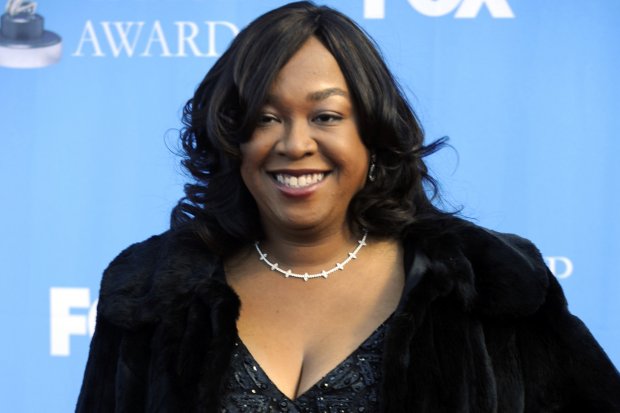























































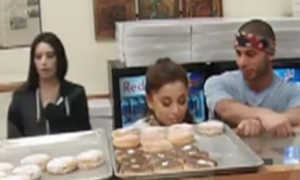















































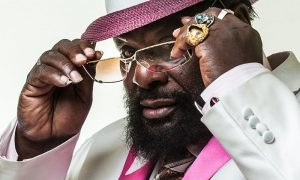



















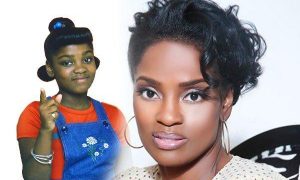





























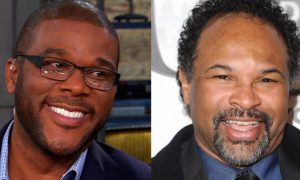





















































































![[Video] Chicago Police Officers Caught On Video Telling Two Black Men "We Kill Mother F**kers"](https://earhustle411.com/wp-content/uploads/2018/07/evil-cop-3-300x180.jpg)
![[Video] Chicago Police Officers Caught On Video Telling Two Black Men "We Kill Mother F**kers"](https://earhustle411.com/wp-content/uploads/2018/07/evil-cop-3-80x80.jpg)












![[Video] White Woman Calls The Cops On Black Real Estate Investor, Cops Threaten To Arrest Her For Harassing Him](https://earhustle411.com/wp-content/uploads/2018/05/nosy-neighbor-300x180.png)
![[Video] White Woman Calls The Cops On Black Real Estate Investor, Cops Threaten To Arrest Her For Harassing Him](https://earhustle411.com/wp-content/uploads/2018/05/nosy-neighbor-80x80.png)


![White Scientist Says The Black Community Is Being Targeted By The Medical System, They Are Deliberatly Being Poisoned [Video]](https://earhustle411.com/wp-content/uploads/2016/05/mike-adams-300x180.jpg)
![White Scientist Says The Black Community Is Being Targeted By The Medical System, They Are Deliberatly Being Poisoned [Video]](https://earhustle411.com/wp-content/uploads/2016/05/mike-adams-80x80.jpg)








![Teenage Girl Shot In Her Stomach Three Times But Took Time To Post To Facebook [ Video]](https://earhustle411.com/wp-content/uploads/2016/02/Gangster-chick-300x180.jpg)
![Teenage Girl Shot In Her Stomach Three Times But Took Time To Post To Facebook [ Video]](https://earhustle411.com/wp-content/uploads/2016/02/Gangster-chick-80x80.jpg)







